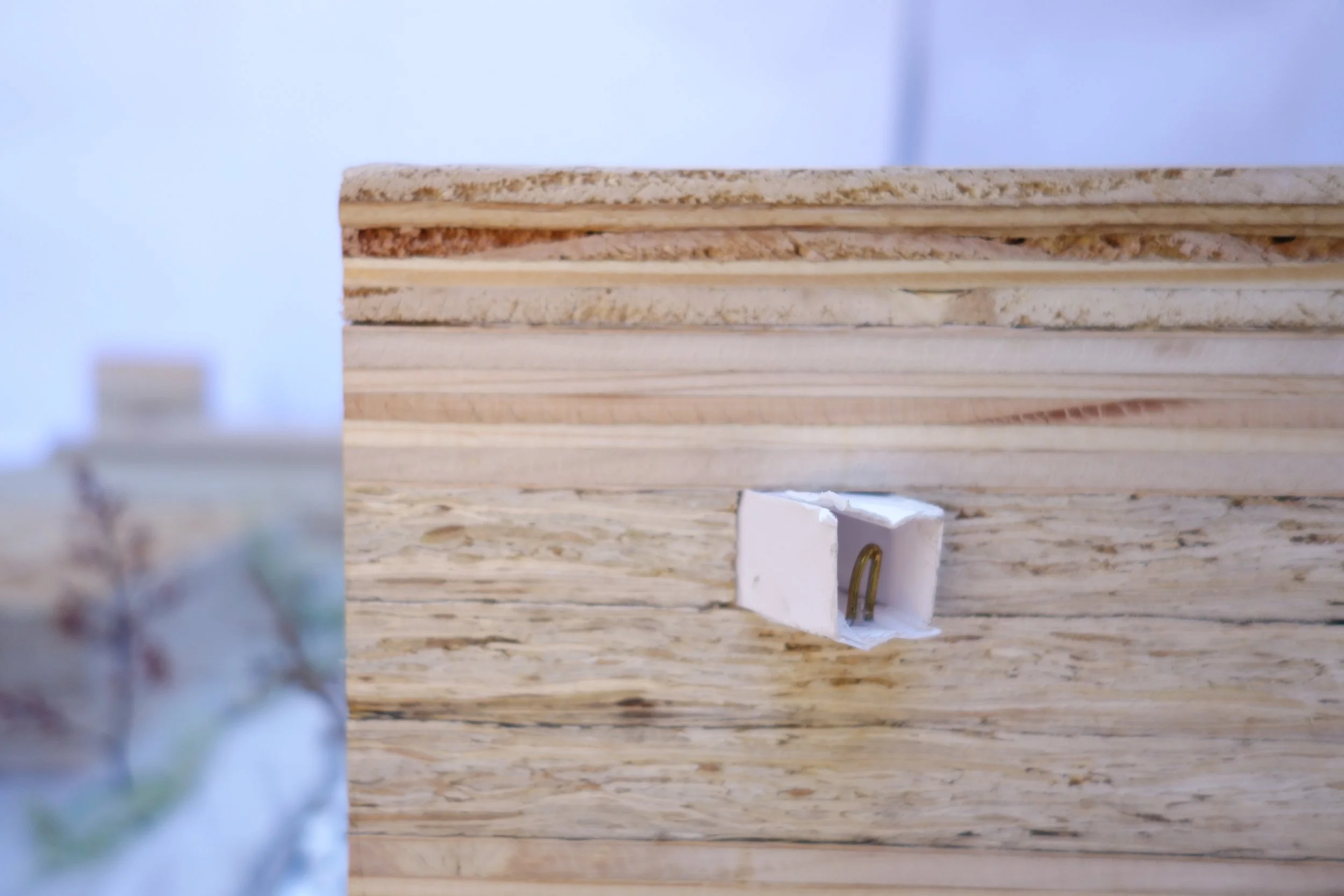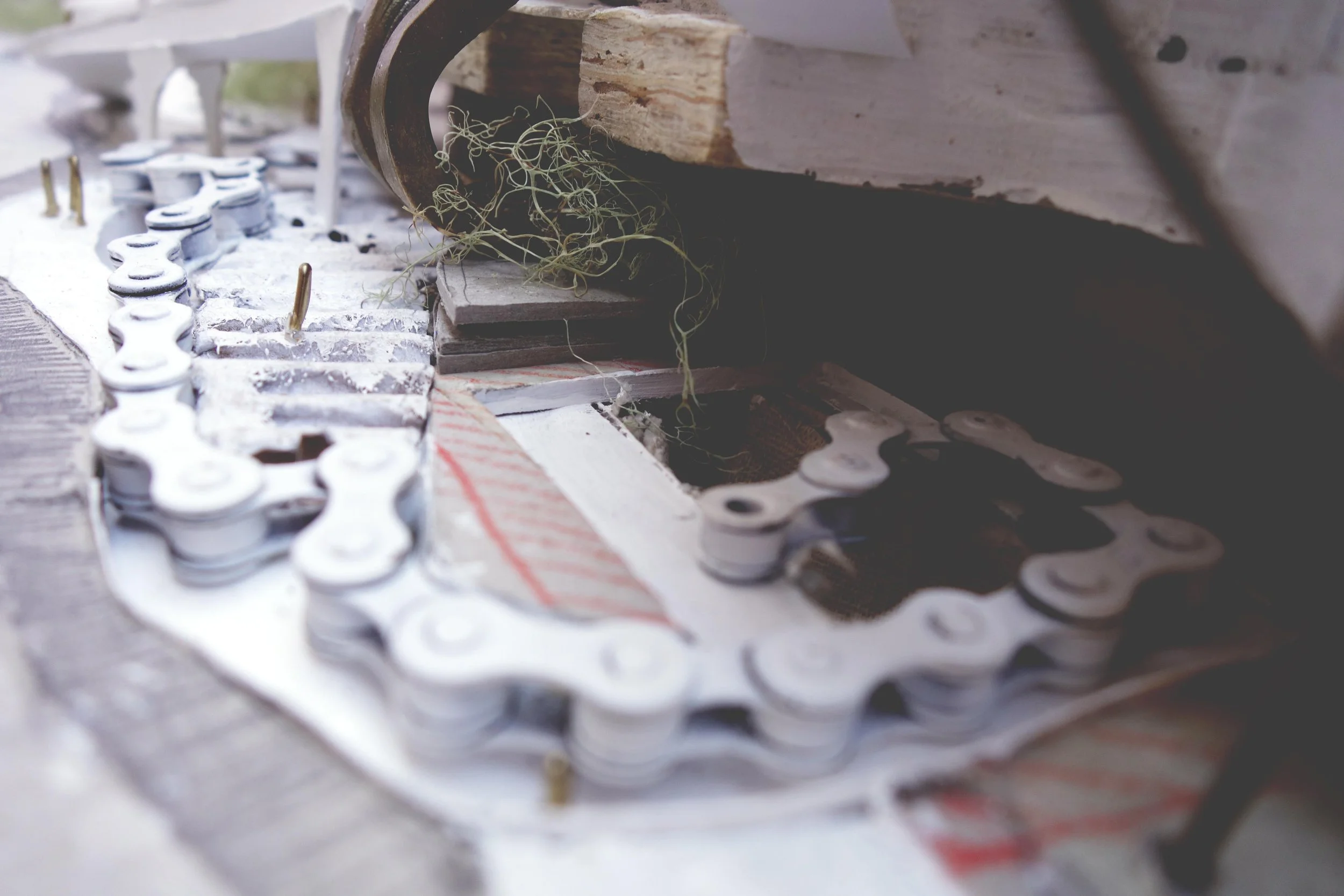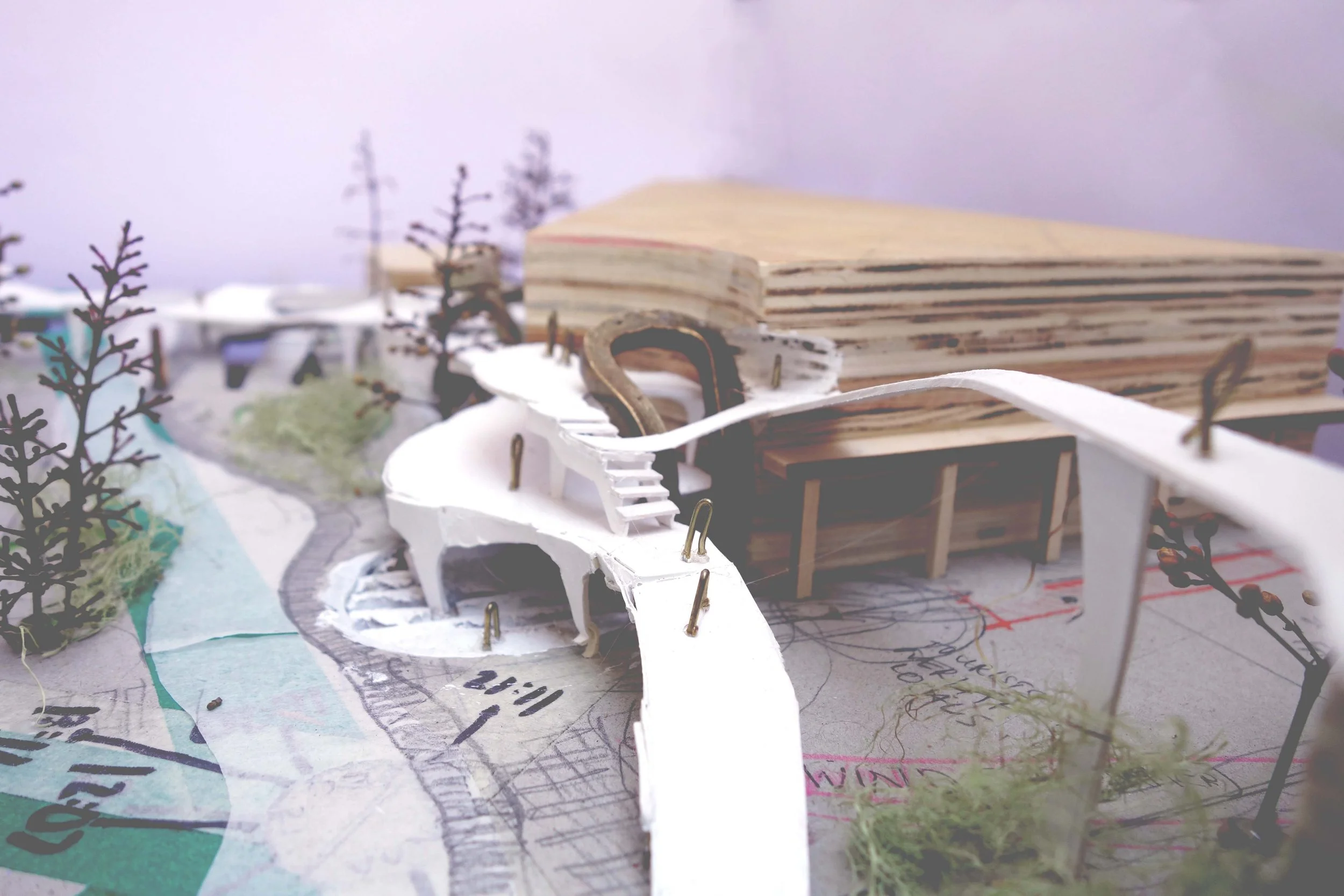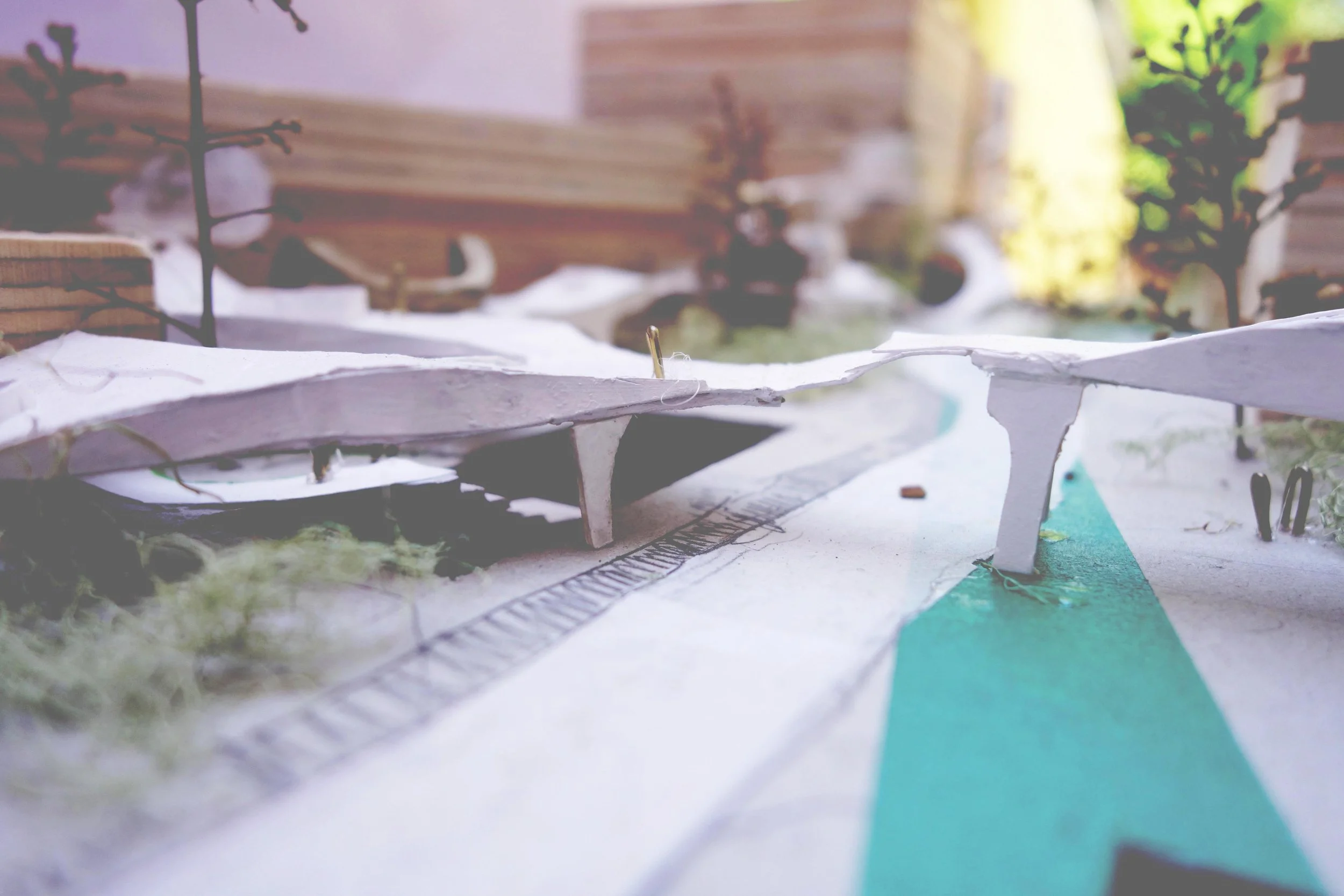we the movers
thesis statement
For the first 99.9% of human history we were a “rural” species living with and among the earth. Recently that changed: in 2008 we became an urban species, with over 50% of people living in urban environments.
Although culture, community, and commerce have flourished with the rise of cities, certain aspects of the human experience have been neglected with the prioritization of efficiency. As a result, our societal and physical environments have evolved much faster than we have. Steel steals the sky, asphalt obscures the ground, and our minds forge forth. Meanwhile our bodies and our senses, tools for engagement, have been left behind, forgotten. Our urban experiences revolve around direct movements from place to place, unimpeded, unchallenged, unprompted by the subtle conditions of the places we inhabit.
Architecture has the power to remind us of our most basic biological cravings. By offering resistance, dislocating the body from routine movement, and curating sensory experiences architecture can remind us who we are and where we came from. 2008 we became in urban species, with over 50% of people living in urban environments.
cal poly architecture thesis project
site: seattle wa
sept 2018 - may 2019
project site
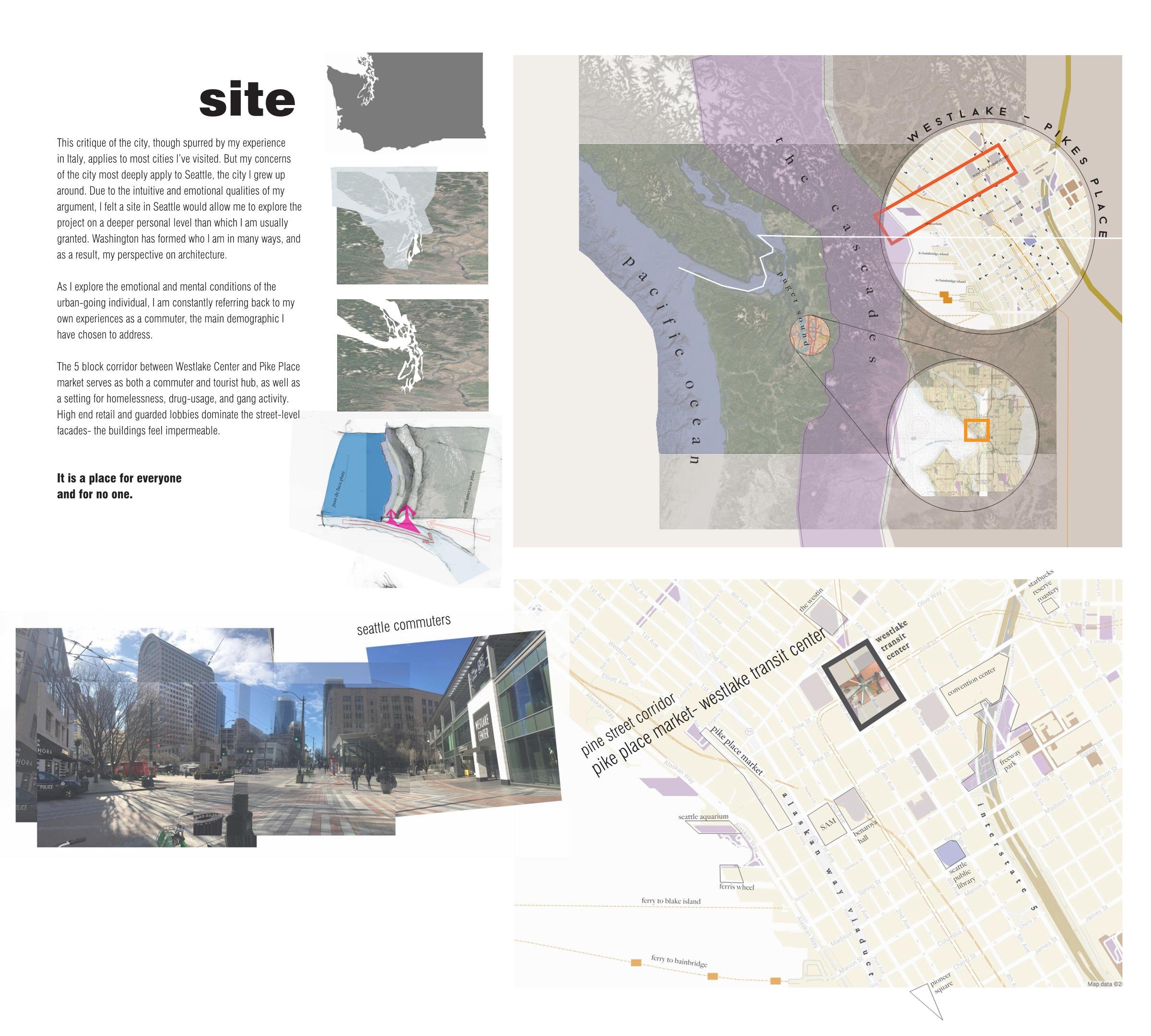



process work
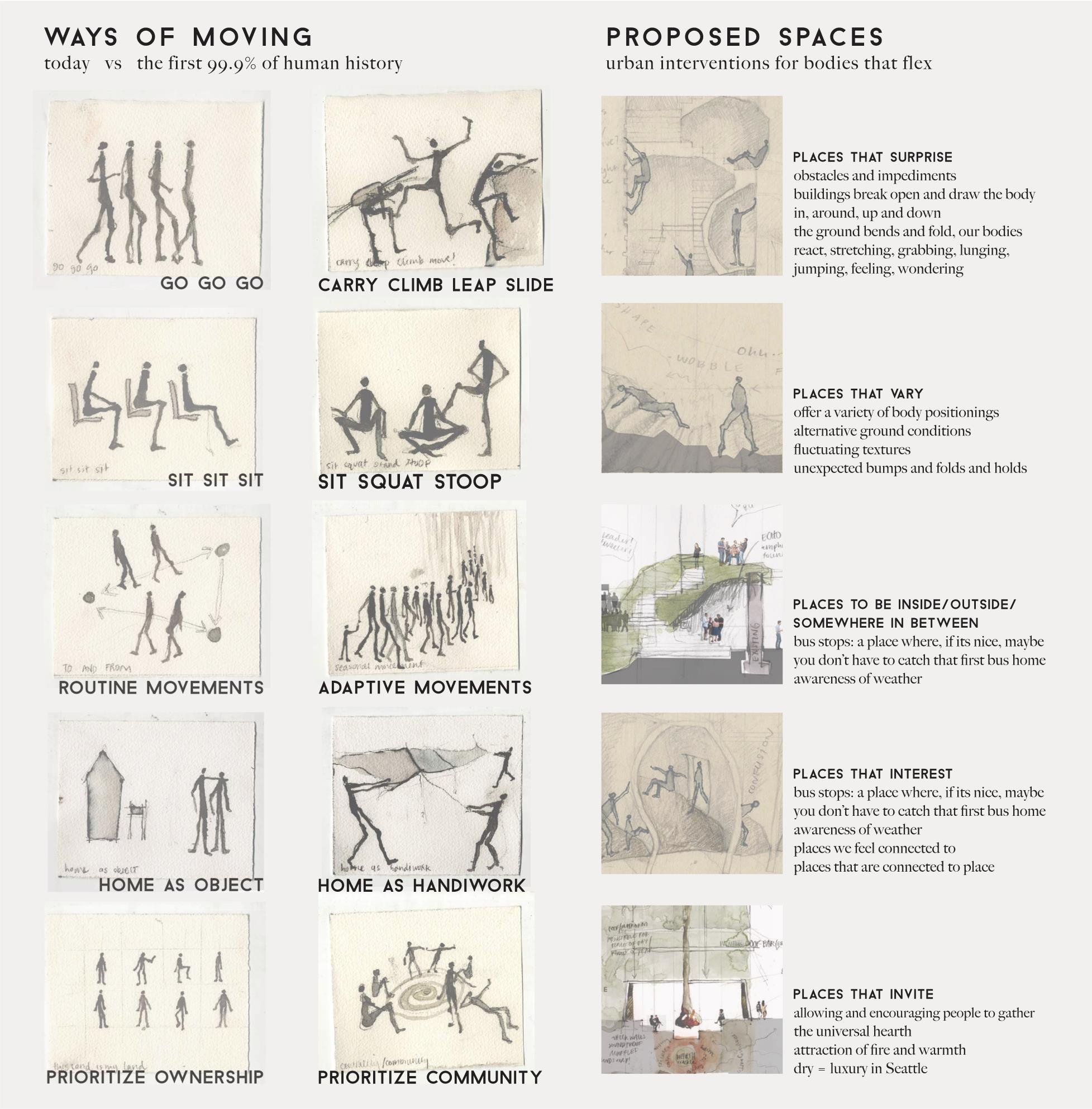
movement diagrams
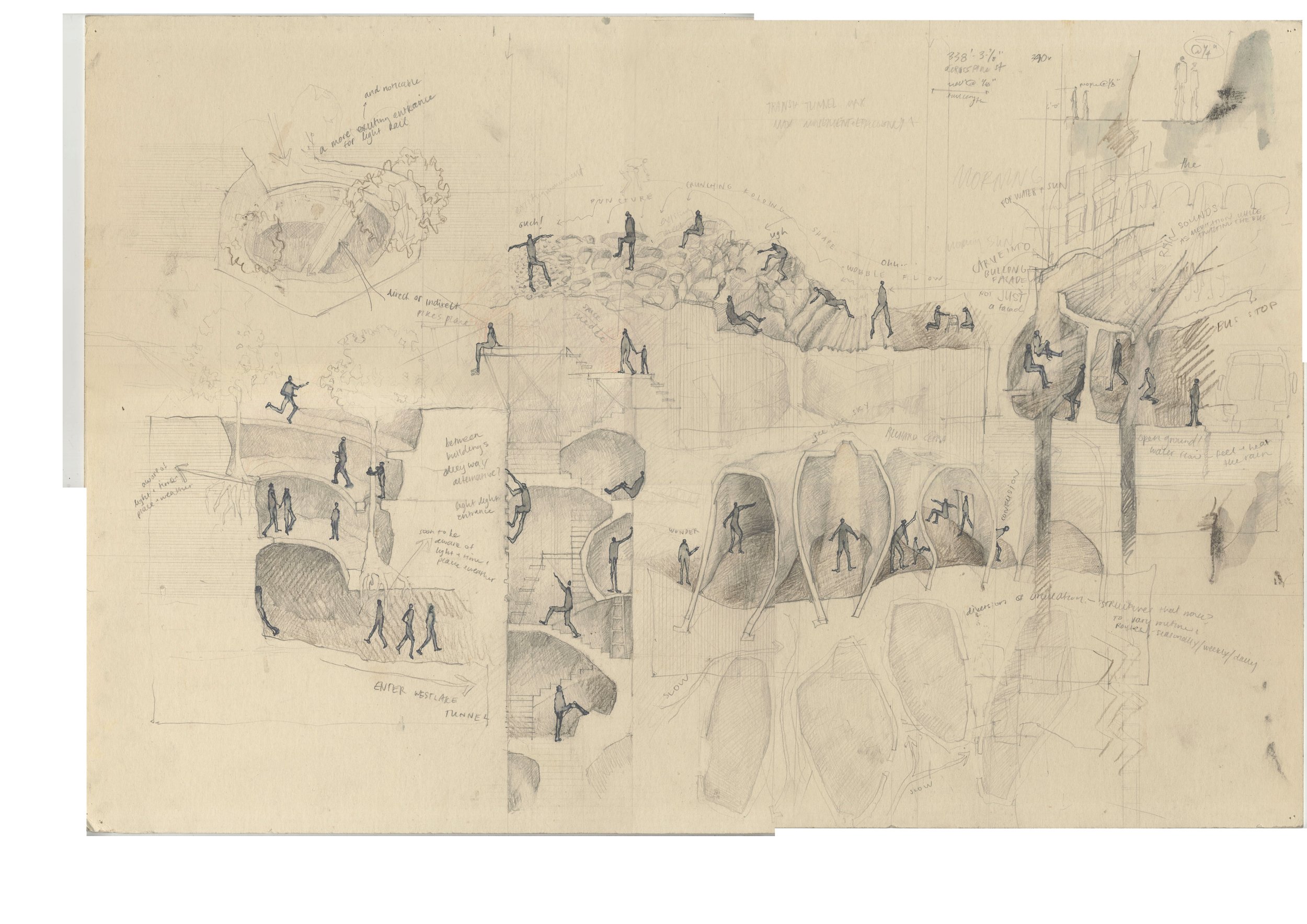
movement sections

example of how westlake plaza transformation. topography can create natural platforms for people to gather, communicate, and lead, in both formal and informal ways.
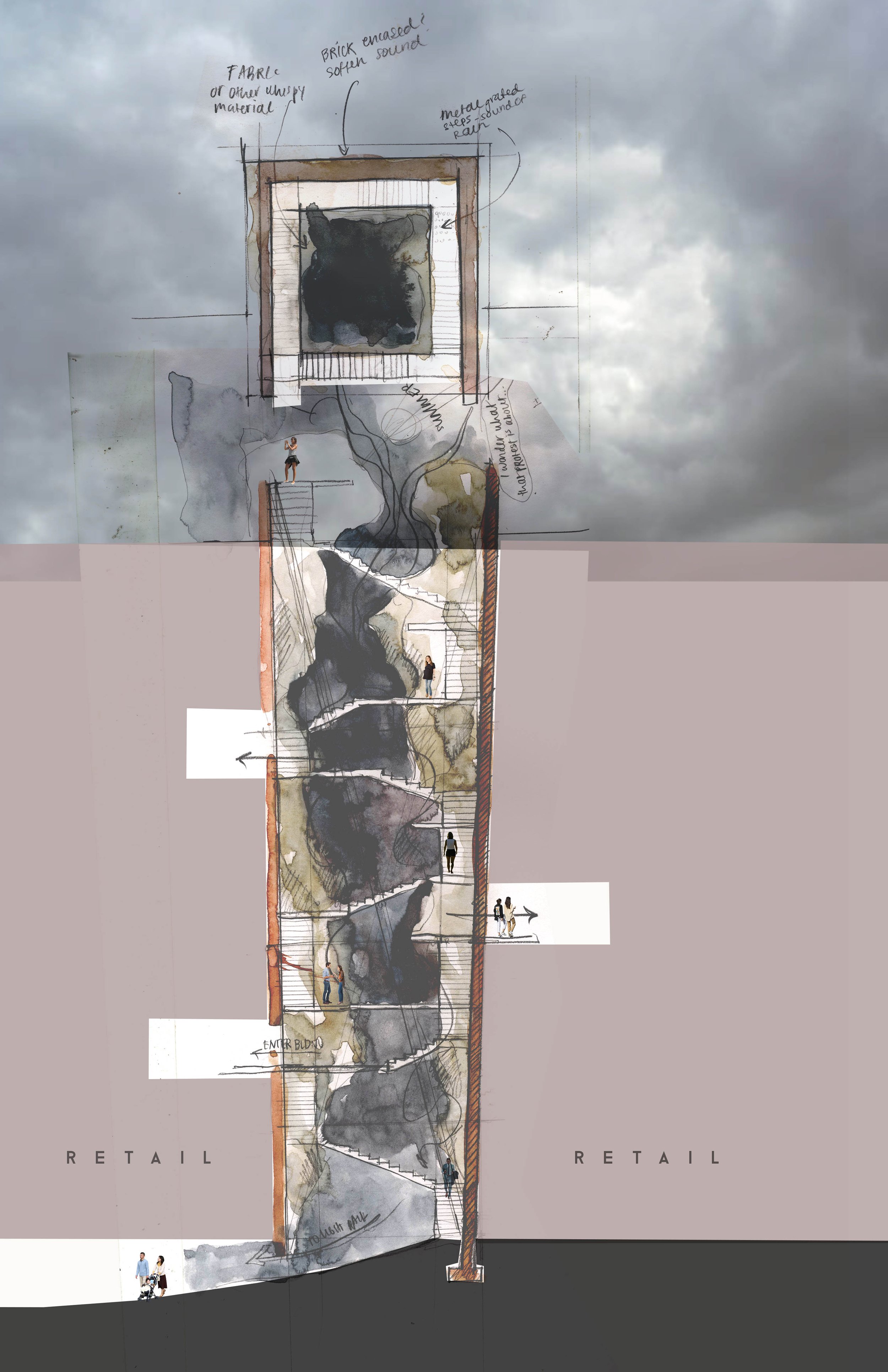
carving into building facade to draw people up and into spaces that are otherwise imposing, uninviting, and private

street carve - a way to enhance spaces that are otherwise unassuming and rushed by. maybe random nodes like this would encourage people to stop and engage with one another.
model photos
final site section



